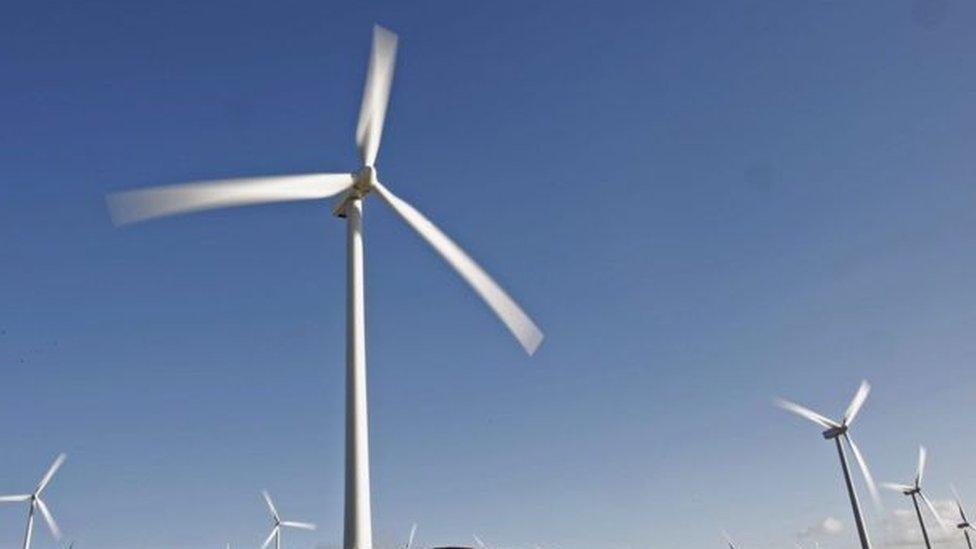Plans for 22-turbine wind farm near Altnaharra approved
- Published

Consent for the construction of a 22-turbine wind farm in the Highlands has been given by the Scottish government.
More than 200 objections were lodged against Creag Riabhach wind farm near Altnaharra.
However, Highland Council officers recommended that the planning application be approved.
The wind farm will have a generating capacity of 72.6MW, enough to power 36,000 homes, with estimated savings of 66,000 tonnes of carbon dioxide a year.
The government said the development was anticipated to provide in excess of £9m in community benefit.
Energy Minister Paul Wheelhouse said: "Renewable energy sources accounted for over 56.7% of gross electricity consumption in Scotland in 2015, and onshore wind is a key driver for the growth in both our renewable electricity supply and wider renewable energy sector and in the delivery of our vision for a greener Scotland and statutory climate change targets by enabling decarbonisation of electricity production.
"This proposal for Creag Riabhach received popular support from the local community council and public alike."
'Lasting legacy'
Tim Philpot, director of Creag Riabhach Wind Farm, said: "Not only will Creag Riabhach generate up to 72.6MW of clean, renewable energy, but it will also give the communities of the North Highlands region a lasting legacy benefit of £700,000 through the Estate's Altnaharra Foundation.
"This is aimed at providing employment and business opportunities in the area and includes a partnership with North Highland College UHI, to provide training and skills, employment opportunities, and apprenticeship funding for local employers."
But the John Muir Trust, which campaigns to keep wild places "free from inappropriate development", condemned the decision.
Chief executive Stuart Brooks said: "The decision flies in the face of a series of previous decisions by the Scottish government, refusing consent to similar applications impacting on Wild Land Areas.
"This is not a few small community-owned turbines. It is a major industrial development, including giant turbines, access roads and transmission infrastructure, which will almost certainly lead to the redrawing of the boundary of Wild Land Area 37.
"We are concerned that this project will become a Trojan Horse, attracting further large-scale industrial development into the area in the future, leading to further diminishing of the qualities of this wild place which attract visitors from around the world.
"We also fear that the decision could set a precedent for other Wild Land Areas."
- Published4 August 2015
